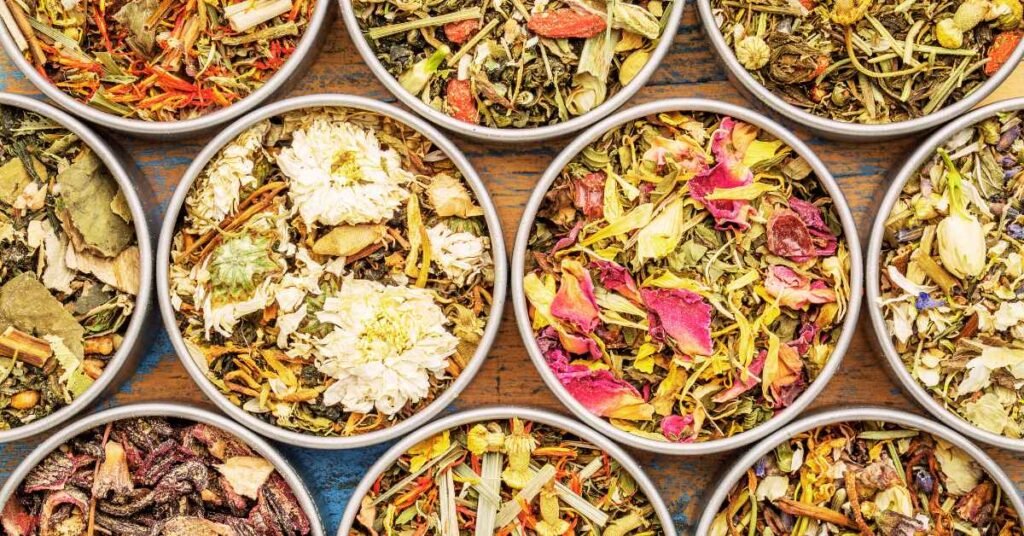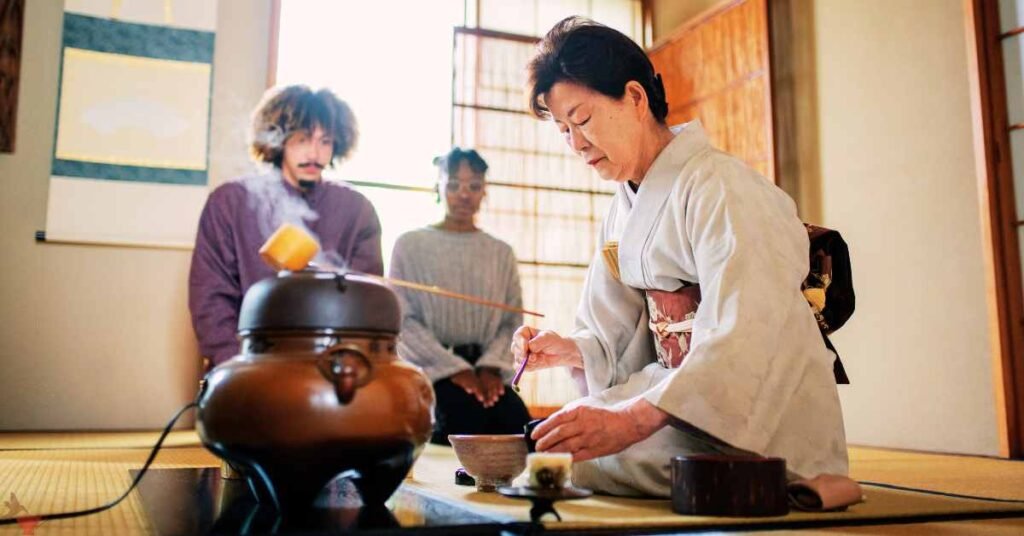We know that history is full of influential women, and today you will learn about the 3 women who contributed the most to the world of tea.
It is quite curious that tea is widely associated with female consumption, yet its history is full of male protagonists.
Whether it is about its discovery, cultivation, study, or commercialization, in all these areas there are stories about curious and brave men who dedicated their lives to Camellia Sinensis. Still, there seem to be few cases of women who have played an essential role in the evolution of tea.
However, this is not to say that there are no such women. In fact, there are: scattered throughout the centuries, often solitary in their efforts, but always visionary and persevering.
For this reason, we have decided to share with you three stories of influential women in history who made their way in various areas of society through their special relationship with tea, in order to share their renewed view of this infusion. They are, without a doubt, pioneers of tea.
Roberta C. Lawson and Mary McLaren: A Duo of Influential Women

You probably don’t know that the tea bag in our pantries came from the minds of two women from Milwaukee, Wisconsin, at the beginning of the 20th century.
But wait: isn’t it always said that it was a merchant named Thomas Sullivan who invented this method? It certainly has the merit of mass-marketing tea bags, but Lawson and McLaren actually came up with them in the first place, calling them “tea leaf holder”.
Creativity in Service of Economy
The purpose of this invention was to avoid the waste generated by brewing a pot of tea when you only wanted to drink one cup. In addition, the creators were aware that their product had to be economical and easy to use.
It was a kind of envelope – or pocket as they themselves pointed out – made of cotton mesh fabric and reinforced with longitudinal seams, sufficiently expandable to allow the tea leaves to be properly infused.
The Most Influential Women in Tea History, Oppressed by a Man?
Both women began the patent process in 1901 and were awarded the patent two years later, in 1903.
However, it is not known what happened afterwards and there is no record of whether their tea bags were ever marketed.
Lawson and McLaren’s case seemed to be headed for success: they identified a widespread problem among tea consumers, proposed an innovative, inexpensive and easy-to-implement solution, and obtained legal backing to market their creation. Truly influential women in the history of tea.
The question that remains is why, then, is the merchant Thomas Sullivan usually mentioned as the inventor of the tea bag, whether it is a gender disadvantage, since it was a time when women were essentially relegated to the domestic sphere, or whether the inventors did not find the right marketing strategy and, therefore, their innovation was not enough?
In any case, it is a historical fact that makes us reflect on how tea is related to the social processes of humanity.
Oura Kei and Her Crucial Role in Relation to Japanese Green Tea

Today, tea lovers know that, when it comes to green teas, Japan has an indisputable weight.
It is easy to associate Japanese culture with this beverage, as it has earned an irreplaceable place in the Camellia Sinensis category.
It is hard to assimilate that there was a time when Japanese tea remained confined to the country’s borders practically in its entirety. Until Oura Kei entered the scene and became known as one of the pioneers in the export of green tea from that country.
Oura’s First Steps in the Tea World
Oura was born in Nagasaki, Japan, in 1828, into a prosperous family of oil merchants.
When she was about twenty years old, faced with the decline of the family business, she began to explore new markets in search of commercial opportunities and decided to travel to Shanghai to investigate the tea business.
It was in this context that she decided to ask a Dutch merchant to send samples of tea from Saga Prefecture on her behalf abroad, specifically to the United States, England and Arabia, with the idea of attracting sales prospects.
As a result of the above, and following the good reception of the samples, in 1856 an English merchant named William Olt visited Nagasaki and placed an order for 60,000 kilograms of tea with him.
A Monumental and Inspiring Challenge
Oura knew that there was no plantation that could supply such an order, so she had to go to great lengths to fulfill Olt’s request, touring various tea factories in the country.
Finally, she was able to fulfill the order, albeit partially, thus making his first export of tea, which would be the first of many.
This was the kick-off for the export of Japanese tea and in 1859, when the ports of Nagasaki, Yokohama and Hakodate were opened to the outside world, an intense era of international trade in Japanese tea began.
In this period, Oura achieved great economic prosperity and much prestige as a skillful businesswoman.
An Influential Woman in Tea History Who Swam Against the Tide

Known as a strong-willed woman, she drew on all the learning acquired by her family in the oil business and her contacts in Nagasaki, and thanks to her strategic and visionary mindset she was able to seize a business opportunity in a market that was still in its infancy.
The way in which Oura blazed her own trail at a time when the female voice was neither valid nor legitimate is particularly remarkable.
Especially knowing that she did not have the backing of a male partner, a fact that at the time was quite socially disabling.
An Undisputed Legacy
Oura Kei is known today as the woman who expanded the international trade in Japanese tea. She passed away in 1884, and was posthumously honored as a woman of great influence, earning recognition from the Japanese Ministry of Trade and Agriculture.
Mrs. Campbell Bigelow and Her Search for a Business Opportunity
In the midst of the Great Depression and World War II, Ruth Campbell Bigelow was in the midst of her interior design business. Her husband had lost his job as a publicist in a prestigious company a few years ago, so the financial outlook had become uncertain.
In this context, the Bigelows decided to venture into the food industry, knowing that it was a promising area. So, studying the spice blends sold in Chinese stores, Ruth delved deeper into another star product of this culture: tea.
Reinventing Herself among Oranges and Spices
One day, dissatisfied with the current tea sold in the country until then, she set out to create a blend that would taste good to her, inspired by a colonial recipe. After several attempts, he chose the batch that tasted best to him and that is how he came up with the formula for his spicy blend, a mixture of black tea, orange peel and sweet spices.

Afterwards, he shared his creation with family and friends and the reception was very favorable. Someone close to her who served her blend at a party even reported that it had generated “constant comments” from her guests.
An Influential Woman in Tea Blending History
This success was the starting point for this woman to found the famous Bigelow Tea Company in 1945, when she was 47 years old. In fact, her first product was called “Constant Comments” and is still part of the company’s product range to this day.
Moreover, according to some tea scholars, Ruth’s foray into the blends market changed the paradigm of tea consumption in the United States, elevating the sensory experience for consumers and paving the way for the sale of special blends, to the detriment of commodity tea.
A Masterstroke: the “whiffing jar”
But it wasn’t all plain sailing for Ruth. At first she introduced her teas in various gourmet stores, but sales were not enough to sustain the project over time.
Thinking of strategies to boost her brand, one day she remembered the episode when a customer asked her if she could smell the tea.
The woman was so impressed with the aroma that she immediately bought a bottle and later returned to buy more.
This gave Ruth the idea of including scent containers (or whiffing jars) in her outlets, so that customers could smell her products, as she realized that the aromatic impact was key to convincing consumers to buy them.
Apparently, this sensory marketing strategy had a decisive effect on her business, as sales began to pick up and over time the brand consolidated and expanded.
Ruth’s Legacy

Today, the Bigelow Tea Company is a large and well-established company based in Connecticut, USA, which since its founding has manufactured more than 150 blends.
In addition, since 2003 it has owned one of the largest tea plantations in the country, the Charleston Tea Garden, located in South Carolina, which has just over 50 hectares.
This company upholds the legacy of Ruth Bigelow, a woman who rescued an old colonial recipe and changed the way tea was drunk in the United States.
One more reflection on these influential women in the history of tea
These inspirational women were not only the first of their gender to do what they did, but they innovated in areas where no man had ventured before.
With ingenuity and courage, they made their way into unknown realms and, hand in hand with tea, deployed their talents to prove that they could make an impact in their respective contexts.
And, even if their end was uncertain as in the case of Lawson and McLaren, they still have well earned their place in the tea hall of fame, that place where creative people converge, who were inspired by Camellia Sinensis to do something different.
So the next time you see a tea bag, or drink a Japanese Sencha, or enjoy an aromatic blend, remember these four women who dreamed big and dared to swim against the current to leave a mark on the world.
We invite you to take a look at our woman owned and woman run tea shop, Hummingbird Tearoom, inspired by the great stories of influnecal women in tea and select your favorite orgnaic tea blend.
MEDICAL DISCLAIMER
Itsnevernotteatime.com cannot and does not contain medical/health advice. The medical/health information is provided for general and educational purposes only and is not a substitute for professional advice.




